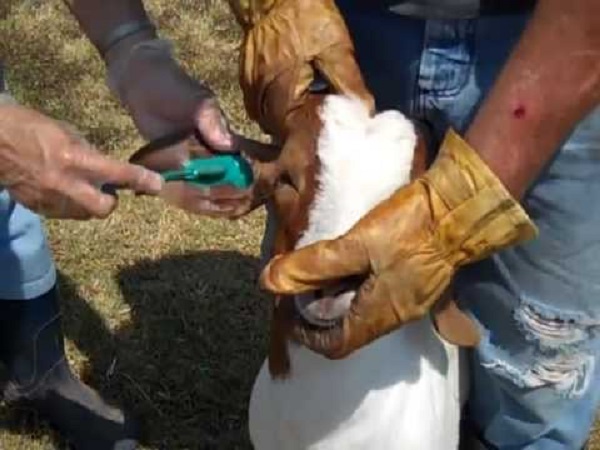
Tattooing goats is a common practice among goat owners and breeders for identification purposes. This process involves the permanent marking of a goat’s skin, typically in the ears, using a specific tattooing system. While some may question the necessity of tattooing, it plays a crucial role in goat management, breeding programs, and overall herd health. In this article, we will explore the importance of tattooing goats and provide an overview of the process involved.
The Importance of Tattooing Goats
Identification
A tattoo serves as a unique identifier for each goat, allowing owners and breeders to distinguish between animals and maintain accurate records of lineage, health history, and performance.
Herd Management
Tattooing assists in maintaining proper documentation of vaccinations, deworming schedules, breeding cycles, and other crucial management aspects.
Show and Registration Requirements
Many breed associations and shows require goats to be tattooed for registration and participation. A tattoo provides proof of pedigree and authenticity.
Genetic Improvement and Breeding Programs
Pedigree Tracking
Tattooing facilitates the tracing of a goat’s ancestry and pedigree, aiding breeders in making informed decisions for breeding and genetic improvement.
Preventing Inbreeding
By accurately identifying each goat, breeders can avoid accidental inbreeding and maintain genetic diversity within their herds.
Performance Evaluation
Tattooing allows breeders to record and monitor individual goat performance, such as milk production, growth rates, and disease resistance, contributing to the overall improvement of the breed.
The Process of Tattooing Goats
Preparation
Gather the necessary equipment: This includes a clean tattooing kit, tattoo ink, tattoo pliers, and individual identification numbers or letters.
Ensure Cleanliness
Sterilize the tattooing equipment to minimize the risk of infection and cross-contamination.
Restraint and Safety
Properly restrain the goat to ensure safety for both the animal and the person performing the tattoo. It is advisable to have an assistant to help hold the goat during the process.
Tattoo Application
Select the Location
The most common location for goat tattoos is the inside of the ear, where the skin is relatively thin and easily visible.
Positioning and Spacing
Place the tattoo digits or letters in a consistent and legible manner, following the appropriate breed association’s guidelines.
Apply the Tattoo
Press the tattoo pliers firmly against the skin, ensuring the ink penetrates the punctures. Remove the pliers carefully.
Aftercare
Apply an antiseptic ointment or tattoo ink preservative to promote healing and minimize the risk of infection. Monitor the tattoo site for any signs of complications or infection, such as swelling, redness, or discharge.
Conclusion
Tattooing goats is a vital practice in the goat industry, offering benefits such as individual identification, herd management, genetic improvement, and participation in shows and registrations. By following the appropriate procedures and maintaining good husbandry practices, goat owners and breeders can ensure accurate record-keeping, genetic diversity, and effective herd management.
Related Articles & Free Email Newsletter Sign Up
10 Steps to Eliminating Hypothermia in Newborn Goats
How to Identify the Symptoms and Treatments for Scours in Goats
How to Recognize and Prevent Impending Health Problems in Goats


Comment here